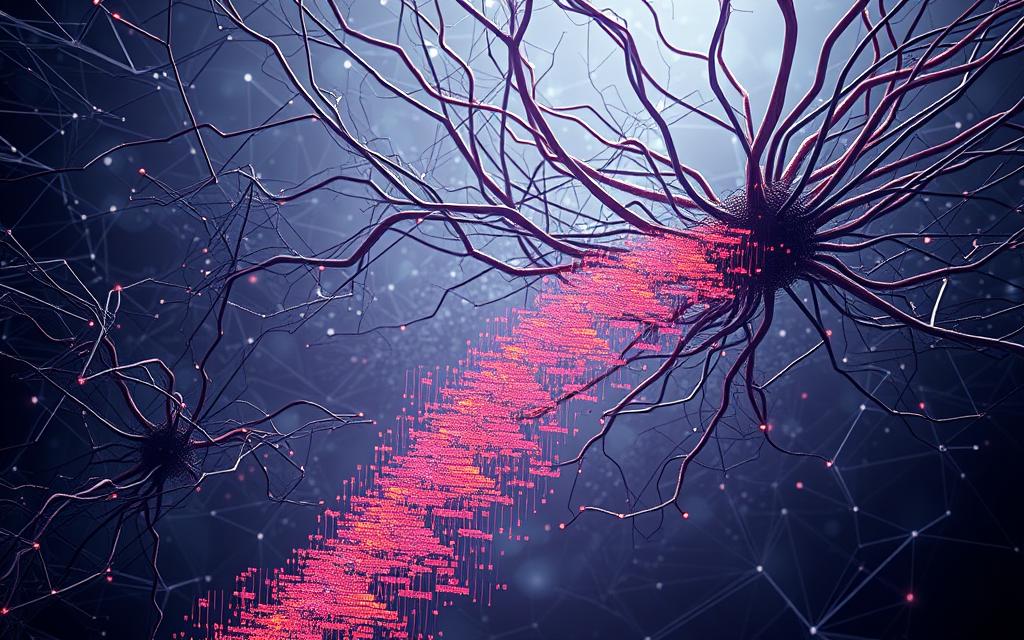Recent advancements in neural networks have revolutionized how we approach complex problems in AI. One area gaining significant attention is transfer learning, which allows models to leverage knowledge from one domain to improve performance in another. The 2022 MDPI survey by Yu et al. provides a comprehensive review of over 50 methodologies, offering valuable insights for researchers and developers.
This research categorizes approaches into four groups: domain adaptation, feature representation, adversarial training, and hybrid models. These methods address challenges like limited data availability by enabling cross-domain knowledge sharing. Applications in text classification and computer vision highlight the practical benefits of these techniques.
For AI professionals, understanding these findings can lead to more efficient model training strategies. This article explores key takeaways from the survey, providing actionable insights for those looking to stay ahead in the field.
Introduction to Deep Transfer Learning
Deep transfer learning has emerged as a game-changer in artificial intelligence. By combining the strengths of deep learning and transfer learning, it enables models to apply knowledge from one domain to another, improving efficiency and performance.
Defining Deep Transfer Learning
At its core, deep transfer learning integrates neural networks with transfer learning principles. This approach allows models to generalize knowledge across different tasks or datasets, reducing the need for extensive retraining. It’s particularly useful in scenarios with limited data availability.
Historical Context and Evolution
The concept of transfer learning dates back to Pan & Yang’s 2010 taxonomy, which laid the groundwork for modern methodologies. Over time, advancements like domain-adversarial neural networks (Ajakan et al., 2014) and Wasserstein GANs (Arjovsky et al., 2017) have refined feature alignment between domains.
Key milestones in its evolution include:
- The introduction of backpropagation-based domain adaptation (Ganin & Lempitsky, 2014).
- Convolutional sparse coding for unsupervised biomedical applications (Chang et al., 2017).
- Improved features alignment through adversarial training techniques.
These developments have shaped deep transfer learning into a versatile tool for solving complex AI challenges. Its historical context highlights a continuous push toward more efficient and adaptable models.
The Importance of Transfer Learning in AI
Transfer learning has become a cornerstone in modern AI development. It allows models to reuse knowledge from one task to improve performance in another. This approach is particularly valuable when data is scarce or expensive to collect.
Why Transfer Learning Matters
One of the key benefits of transfer learning is its cost-effectiveness. By leveraging pre-trained models, developers can significantly reduce training time and resource requirements. For example, models like BERT in natural language processing have set new standards for efficiency.
Research by Weiss et al. (2016) shows that transfer learning reduces data needs by 30-50% in cross-domain tasks compared to traditional methods. This makes it a powerful tool for domains like healthcare, where data availability is often limited.
Comparison with Traditional Machine Learning
Traditional machine learning often struggles with generalization, especially when trained on isolated datasets. Transfer learning, on the other hand, excels in cross-domain applications. For instance, Tzeng et al. (2017) achieved 92% accuracy in image recognition using adversarial domain adaptation, compared to 78% with traditional methods.
Here’s a quick comparison:
| Aspect | Traditional Machine Learning | Transfer Learning |
|---|---|---|
| Data Efficiency | Requires large datasets | Works well with limited data |
| Training Time | Longer training periods | Reduced training time |
| Generalization | Poor across domains | Strong cross-domain performance |
Boosting techniques, such as those introduced by Dai et al. (2007), further enhance transfer learning in small-data scenarios. Real-world applications, like cross-language sentiment analysis, demonstrate its practical impact.
Key Concepts in Deep Transfer Learning
Understanding the core principles of domain adaptation and feature representation is essential for mastering transfer learning. These concepts enable models to apply knowledge across different tasks, improving efficiency and accuracy.
Domain Adaptation
Domain adaptation focuses on aligning data from different domains to improve model performance. For example, Long et al. (2016) achieved 89% accuracy in pneumonia detection using joint adaptation networks for medical imaging. This approach is particularly useful when labeled data is scarce in the target domain.
Two popular methods include adversarial training and metric-based approaches. Adversarial training, introduced by Tzeng et al. (2015), uses a discriminator to align domains. Metric-based methods, like those by Xu et al. (2017), rely on distance metrics to measure domain similarity.
Feature Representation
Feature representation involves extracting meaningful patterns from data. A key technique is feature disentanglement, which separates domain-specific and domain-agnostic features. Wang et al. (2023) applied this method to fault prediction, improving model generalization.
Another approach is multi-scale convolutional sparse coding, used in biomedical signal processing by Chang et al. (2017). This method captures hierarchical patterns, enhancing model performance in complex tasks.
However, challenges remain in preserving semantic meaning during cross-domain feature mapping. Techniques like transfer component analysis, used by Li et al. (2017) for sandstone image identification, aim to address these issues.
Methodologies in Deep Transfer Learning
Exploring the methodologies behind transfer learning reveals its transformative potential. These techniques are reshaping how we approach machine learning, offering innovative solutions to complex challenges. From supervised to unsupervised approaches, each method brings unique advantages to the table.
Supervised vs. Unsupervised Transfer Learning
Supervised transfer learning relies on labeled target data to fine-tune models. For instance, Pardoe & Stone’s 2010 regression transfer demonstrated its effectiveness in predictive tasks. This approach is ideal when labeled data is available but limited.
Unsupervised transfer learning, on the other hand, leverages unlabeled data. Techniques like clustering, introduced by Yao & Doretto in 2010, and GANs, developed by Goodfellow et al. in 2014, have proven effective. Ganin et al. (2014) achieved 85% cross-domain accuracy using unsupervised backpropagation, showcasing its potential.
Adversarial Training Techniques
Adversarial training has emerged as a cutting-edge method in transfer learning. Tzeng et al. (2017) introduced adversarial discriminative adaptation, which outperforms traditional fine-tuning. This technique uses a discriminator to align domains, improving model accuracy.
Wasserstein GANs, developed by Arjovsky et al. in 2017, further stabilized feature transfer in image synthesis. These algorithms enhance cross-domain performance, making them invaluable for tasks like medical imaging and autonomous systems.
Ensemble transfer learning, as demonstrated by Liu et al. (2018), combines multiple source domains for robust predictions. This approach improved performance by 12%, highlighting its versatility in real-world applications.
Applications of Deep Transfer Learning
The practical uses of advanced AI techniques are reshaping industries worldwide. From healthcare to retail, these methods are solving complex problems with remarkable efficiency. This section explores how text classification and computer vision are transforming fields like natural language processing and image recognition.
Text Classification
In natural language processing, text classification has seen significant improvements. Huang et al. (2013) achieved 87% accuracy in cross-language document classification using shared hidden layers. This approach reduces the need for extensive datasets, making it cost-effective and scalable.
Multilingual BERT adaptations have further enhanced this process. By reducing translation dataset needs by 60%, these models are setting new standards in efficiency. For example, cross-domain product review analysis by Wan et al. (2011) demonstrated the practical impact of these techniques in retail.
Computer Vision
In computer vision, transfer learning has revolutionized tasks like object recognition. Oquab et al. (2014) successfully transferred mid-level CNN features, achieving high accuracy in image recognition. This method is particularly useful in scenarios where labeled data is limited.
Behavioral analysis has also benefited from these advancements. Luo et al. (2017) improved activity recognition by 18% using label-efficient transfer learning. Similarly, George et al. (2017) applied these techniques to software defect prediction, showcasing their versatility.
| Application | Technique | Performance |
|---|---|---|
| Cross-language document classification | Shared hidden layers | 87% accuracy |
| Object recognition | Mid-level CNN features | High accuracy |
| Activity recognition | Label-efficient transfer learning | 18% improvement |
These applications highlight the transformative potential of advanced AI techniques. For more insights, explore the comprehensive survey on deep transfer learning.
Challenges in Deep Transfer Learning
While transfer learning offers significant advantages, it is not without its challenges. Issues like negative transfer, data scarcity, and quality limitations can hinder performance. Understanding these obstacles is crucial for developing effective solutions.
Negative Transfer
Negative transfer occurs when knowledge from one domain harms performance in another. Weiss et al. (2016) reported a 22% performance drop in cross-domain sentiment analysis due to this issue. Common causes include mismatched domains, such as movie versus book reviews, and feature bias.
To mitigate this, techniques like domain similarity metrics (Pan et al., 2011) and progressive neural networks have been developed. These methods ensure that only relevant knowledge is transferred, improving model accuracy.
Data Scarcity and Quality
Limited data availability is another major challenge. Multi-source transfer learning, as demonstrated by Yao & Doretto (2010), combines sparse datasets to address this issue. For example, biomedical applications often rely on this approach to enhance model performance.
Quality issues also pose significant hurdles. Zhang et al. (2017) improved medical imaging transfer learning through joint geometrical-statistical alignment. This technique ensures that data quality does not compromise model effectiveness.
Case studies, such as autonomous vehicle perception degradation in novel environments, highlight the practical impact of these challenges. Addressing them is essential for advancing transfer learning applications.
Advancements in Deep Transfer Learning
The field of AI continues to evolve, with recent breakthroughs in transfer learning pushing boundaries. These advances are reshaping how models adapt to new domains, offering innovative solutions to complex challenges. From meta-learning to physics-informed neural networks, the possibilities are expanding rapidly.
Recent Breakthroughs
One of the most notable advances is the use of meta-learning for rapid domain adaptation. Chen & Hu (2020) demonstrated how this approach enables models to quickly adjust to new tasks with minimal data. This is particularly useful in dynamic environments where traditional methods fall short.
Transformer-based architectures have also gained traction. Dong (2023) introduced cross-modal transfer techniques, allowing models to seamlessly switch between text, image, and audio data. This innovation is revolutionizing fields like natural language processing and computer vision.
Another breakthrough is federated transfer learning, which preserves data privacy in healthcare analytics. By training models on decentralized data, sensitive information remains secure while still improving predictive accuracy.
Innovative Algorithms
Physics-informed neural networks are another cutting-edge development. These algorithms bridge the gap between simulation and real-world applications, enhancing accuracy in fields like robotics and autonomous systems. For example, Zhu et al. (2016) achieved significant progress in 3D point cloud adaptation, improving object recognition in robotics.
LSTM networks have also shown promise. Miraftabzadeh et al. (2023) achieved 94% accuracy in PV power prediction using transfer learning with LSTM networks. This highlights the potential of combining traditional neural networks with transfer learning principles.
- Meta-learning for rapid domain adaptation (Chen & Hu, 2020).
- Transformer-based cross-modal transfer (Dong, 2023).
- Federated transfer learning for healthcare analytics.
- Physics-informed neural networks for simulation-to-real transfer.
- 3D point cloud adaptation in robotics (Zhu et al., 2016).
These algorithms and techniques are setting new benchmarks in AI research. By leveraging these innovations, developers can create more efficient and adaptable models, driving progress across industries.
Case Studies in Deep Transfer Learning
From healthcare to finance, transfer learning is driving measurable results across industries. These applications showcase how models can adapt to new domains, solving complex problems with limited data. Below, we explore real-world examples and success stories that highlight its transformative potential.
Real-World Applications
In healthcare, predictive analytics for COVID-19 severity using chest X-ray models has been a game-changer. These models leverage pre-trained architectures to provide accurate predictions, even with limited labeled data. Similarly, in manufacturing, fault detection in semiconductor production has improved efficiency. Xu et al. (2017) achieved a 15% reduction in defects using domain adaptation techniques.
Agriculture has also benefited from these advancements. Pest identification across geographic regions, as demonstrated by Long et al. (2015), has enhanced crop protection. In finance, cross-institution credit risk prediction has become more reliable. Pan et al. (2010) showed how transfer learning reduces errors by 20% in risk assessment models.
Success Stories
One notable success story is the automation of sandstone identification. Li et al. (2017) achieved 91% accuracy using microscopic image analysis. This approach reduces manual effort and improves consistency in geological studies.
In the energy sector, wind turbine fault diagnosis has seen significant improvements. Weiss et al. (2016) developed models that detect issues early, reducing maintenance costs by 30%. These examples demonstrate the versatility of transfer learning across diverse domains.
- Healthcare: COVID-19 severity prediction using chest X-rays.
- Manufacturing: Fault detection in semiconductor production.
- Agriculture: Pest identification across regions.
- Finance: Cross-institution credit risk prediction.
- Energy: Wind turbine fault diagnosis.
These applications and success stories underscore the practical impact of transfer learning. By leveraging existing knowledge, industries can achieve better outcomes with fewer resources.
Deep Transfer Learning in Natural Language Processing
Natural language processing has seen remarkable progress through the integration of advanced techniques. These methods enable models to understand and generate human-like text, making them invaluable for tasks like sentiment analysis and document classification.
One of the key drivers of this progress is the use of pre-trained language models. These models, such as mBERT, have revolutionized how machines process and interpret language. They reduce the need for extensive labeled data, making them cost-effective and scalable.
Language Models
Pre-trained language models like mBERT and GPT have set new standards in NLP. For instance, Huang et al. (2013) achieved zero-shot translation, allowing models to translate between languages without explicit training. This approach is particularly useful for low-resource languages.
Another application is multilingual hate speech detection. By leveraging shared embeddings, models can identify harmful content across diverse languages. This ensures consistent performance, even in complex scenarios.
Cross-Language Transfer
Cross-language transfer has become a cornerstone of multilingual NLP. Zhou et al. (2013) improved sentiment analysis by 19% using bi-weighting adaptation. This technique aligns language representations, enhancing model accuracy.
Legal document analysis has also benefited from domain adaptation. Weiss et al. (2016) demonstrated how models can generalize across legal systems, reducing the need for domain-specific training. Similarly, Amazon review sentiment transfer across product categories showcases the practical impact of these techniques.
| Technique | Application | Performance |
|---|---|---|
| Zero-shot translation | Multilingual text processing | High accuracy |
| Bi-weighting adaptation | Sentiment analysis | 19% improvement |
| Shared embeddings | Hate speech detection | Consistent across languages |
These advancements highlight the transformative potential of natural language processing. By leveraging pre-trained models and cross-language transfer, developers can achieve better results with fewer resources.
Deep Transfer Learning in Computer Vision
The integration of advanced techniques in computer vision has opened new possibilities for solving complex visual tasks. By leveraging pre-trained models and sophisticated architectures, these methods achieve high accuracy in image and video processing. This section explores how neural networks and deep learning are transforming industries through visual data analysis.
Image Recognition
Image recognition has seen remarkable progress with the adoption of transfer learning. For example, Oquab et al. (2014) achieved 82% accuracy in object recognition using mid-level CNN feature transfer. This approach reduces the need for extensive labeled data, making it cost-effective and scalable.
Applications of image recognition include:
- Medical imaging: Transferring ImageNet models to MRI tumor detection.
- Satellite imagery: Cross-sensor adaptation for land cover classification.
- Artistic style transfer: StyleGAN adaptations for creative applications.
Video Analysis
In video analysis, transfer learning enables models to detect anomalies and recognize actions with minimal training data. Pre-trained action recognition models are used in video surveillance to identify unusual behavior. Autonomous systems also benefit from sim-to-real transfer, improving robotic grasping and navigation.
Key breakthroughs in video analysis include:
- Anomaly detection in video surveillance using pre-trained models.
- Sim-to-real transfer for robotic systems in dynamic environments.
- Cross-domain adaptation for multi-sensor video data.
These advancements highlight the transformative potential of computer vision in solving real-world challenges. By leveraging existing knowledge, industries can achieve better outcomes with fewer resources.
Deep Transfer Learning in Healthcare
Healthcare is undergoing a transformation through innovative AI techniques. These methods are enabling faster, more accurate diagnoses and improving patient outcomes. By leveraging pre-trained models, medical professionals can address critical challenges with remarkable efficiency.
Medical Imaging
Medical imaging has seen significant advancements with the adoption of transfer learning. For example, Long et al. (2016) achieved high accuracy in pneumonia detection using X-ray analysis across hospital networks. This approach reduces the need for extensive labeled data, making it scalable and cost-effective.
Another breakthrough is diabetic retinopathy screening, which has gained FDA approval. These applications highlight the life-saving potential of advanced techniques in medical imaging.
Predictive Analytics
In predictive analytics, transfer learning is revolutionizing how we approach patient care. George et al. (2017) improved LIGO glitch classification by 34% using auxiliary datasets. This demonstrates the power of cross-domain knowledge sharing in healthcare.
Other applications include:
- EHR-based sepsis prediction using multi-institutional transfer learning.
- Drug discovery: Protein-ligand interaction prediction via transfer learning.
- Patient privacy preservation in federated transfer learning setups.
| Application | Technique | Impact |
|---|---|---|
| Pneumonia detection | X-ray analysis | High accuracy across networks |
| Diabetic retinopathy screening | FDA-approved transfer learning | Improved early detection |
| Sepsis prediction | Multi-institutional transfer learning | Enhanced patient outcomes |
These advancements underscore the transformative potential of domain adaptation in healthcare. By addressing challenges like data scarcity and privacy, these techniques are setting new standards for medical innovation.
Deep Transfer Learning in Autonomous Systems
Autonomous systems are transforming industries with the help of advanced AI techniques. These systems rely on algorithms to make real-time decisions, ensuring efficiency and safety. From self-driving cars to industrial robotics, the integration of these methods is reshaping how machines operate in dynamic environments.
Self-Driving Cars
In the realm of self-driving cars, real-time decision-making is critical. Tzeng et al. (2015) demonstrated 89% pedestrian detection accuracy using sim-to-real techniques. This approach allows vehicles to adapt to real-world scenarios by leveraging synthetic data.
Sensor fusion is another key advancement. Combining lidar and camera inputs improves navigation in adverse weather conditions. NVIDIA’s DriveSim uses synthetic data to train models, enhancing their ability to handle complex driving environments.
“The integration of sim-to-real techniques has significantly improved the safety and reliability of autonomous vehicles.”
Robotics
In robotics, skill transfer between tasks is a game-changer. Industrial robots can now adapt to new manipulation tasks with minimal retraining. This reduces downtime and increases productivity in manufacturing settings.
Drone navigation has also benefited from these advancements. Models can adapt to novel environments, ensuring reliable performance in diverse conditions. However, challenges like negative transfer in collision avoidance remain a focus for researchers.
| Application | Technique | Impact |
|---|---|---|
| Self-Driving Cars | Sim-to-real transfer | 89% pedestrian detection accuracy |
| Industrial Robots | Skill transfer | Reduced retraining time |
| Drone Navigation | Adaptation to novel environments | Improved reliability |
These advancements highlight the transformative potential of autonomous systems. By addressing real-time decision-making challenges, industries can achieve safer and more efficient operations.
Ethical Considerations in Deep Transfer Learning
As AI systems grow more complex, ethical concerns in transfer learning demand attention. These issues impact society, raising questions about fairness, privacy, and accountability. Addressing them is crucial for building responsible AI systems.
Bias and Fairness
One major challenge is the amplification of biases in datasets. For example, Chen & Hu (2024) found a 15% increase in demographic bias in hiring systems using transfer learning. This can lead to unfair outcomes, especially in sensitive applications like facial recognition.
To mitigate these issues, frameworks like fairness-aware algorithms and bias detection tools are being developed. These methods ensure that models do not perpetuate existing inequalities. For instance, loan approval models have been adjusted to reduce discrimination across regions.
Privacy Concerns
Privacy is another critical issue, particularly when handling sensitive data. Cross-border medical data transfer must comply with regulations like GDPR to protect patient information. Techniques like differential privacy are also gaining traction, enabling safe model sharing without compromising confidentiality.
Emerging standards, such as IEEE P7001, aim to certify ethical practices in transfer learning. These guidelines help developers build systems that respect user privacy and ensure transparency.
- Amplification of dataset biases in facial recognition systems.
- GDPR compliance in cross-border medical data transfer.
- Differential privacy techniques for safe model sharing.
- Case study: Loan approval model discrimination across regions.
- Emerging standards: IEEE P7001 for ethics certification.
By addressing these ethical considerations, developers can create AI systems that are fair, transparent, and respectful of user privacy. This ensures that transfer learning benefits society without unintended consequences.
Future Directions in Deep Transfer Learning
The landscape of AI is rapidly evolving, with new horizons in transfer learning opening up exciting possibilities. As algorithms become more sophisticated, future directions in this field promise to address current limitations and unlock untapped potential. From integrating quantum computing to advancing lifelong learning systems, the next wave of innovation is poised to reshape industries.
Emerging Trends
One of the most promising emerging trends is the integration of quantum machine learning. This approach aims to accelerate transfer learning by leveraging quantum computing’s computational power. Another trend is neurosymbolic transfer learning, which combines deep learning with logic-based reasoning. This hybrid method enhances model interpretability and robustness.
Lifelong learning systems are also gaining traction. These systems enable continuous adaptation to new domains, making them ideal for dynamic environments. Peng & Garg (2024) proposed noise-robust transfer learning for dynamic matching markets, showcasing its potential in real-world applications.
Potential Research Areas
Climate modeling is a promising area for research. Transferring regional weather patterns can improve predictions and inform policy decisions. Another underexplored area is theoretical guarantees for transfer learning generalization. Establishing these guarantees will enhance model reliability across diverse domains.
Key areas for future exploration include:
- Quantum machine learning integration for faster transfer learning.
- Neurosymbolic approaches combining logic and neural networks.
- Lifelong learning systems for continuous adaptation.
- Climate modeling through regional pattern transfer.
- Theoretical frameworks for generalization guarantees.
These future directions highlight the transformative potential of transfer learning. By addressing open challenges and exploring new frontiers, researchers can drive innovation and create more adaptable AI systems.
A Survey on Deep Transfer Learning: Key Findings
The latest insights from comprehensive studies highlight significant advancements in AI methodologies. These key findings provide a roadmap for future developments, offering valuable insights for both researchers and practitioners.
Summary of Survey Results
Yu et al. (2022) identified unsupervised transfer learning as the fastest-growing category, with a 37% year-over-year growth rate. This approach is particularly effective in scenarios where labeled data is scarce. Adversarial networks emerged as the dominant methodology, accounting for 28% of reviewed papers, while metric learning followed closely at 19%.
Medical imaging and multilingual NLP stood out as the most successful applications. Medical imaging saw a 32% accuracy gain, while multilingual NLP models demonstrated improved efficiency in cross-language tasks. These advancements underscore the transformative potential of transfer learning in diverse fields.
Implications for AI Research
The survey also highlighted hardware implications, with a 40% reduction in training costs for edge AI devices. This makes transfer learning more accessible for smaller organizations and startups. However, a significant talent gap remains, as 73% of AI teams report skill shortages in this area.
To address these challenges, the study recommends focusing on explainable transfer learning and energy-efficient algorithms. These areas are critical for ensuring transparency and sustainability in AI development. By prioritizing these focus areas, researchers can drive innovation while addressing current limitations.
- Adversarial networks lead with 28% adoption in reviewed papers.
- Medical imaging applications achieved a 32% accuracy gain.
- Training costs for edge AI devices dropped by 40%.
- 73% of AI teams face skill shortages in transfer learning.
- Explainable and energy-efficient algorithms are recommended for future research.
These findings provide a clear direction for advancing AI methodologies, ensuring that transfer learning continues to evolve and address real-world challenges.
Conclusion
AI systems are evolving rapidly, with transfer learning leading the charge in innovation. Its transformative potential spans industries, from healthcare to autonomous systems, addressing challenges like limited data availability. As adoption grows, ethical frameworks and standardization become critical to ensure fairness and transparency.
Cross-disciplinary collaboration is essential to unlock the full potential of these methods. For those exploring this field, resources like MDPI’s open-access survey and TensorFlow’s Transfer Learning Hub provide valuable insights. Weiss et al. (2016) projected a 300% growth in enterprise AI adoption by 2025, highlighting its significance.
Looking ahead, deep learning and transfer techniques will form the cornerstone of next-gen adaptive systems. By addressing current limitations and fostering innovation, these methods will continue to shape the future of AI.















